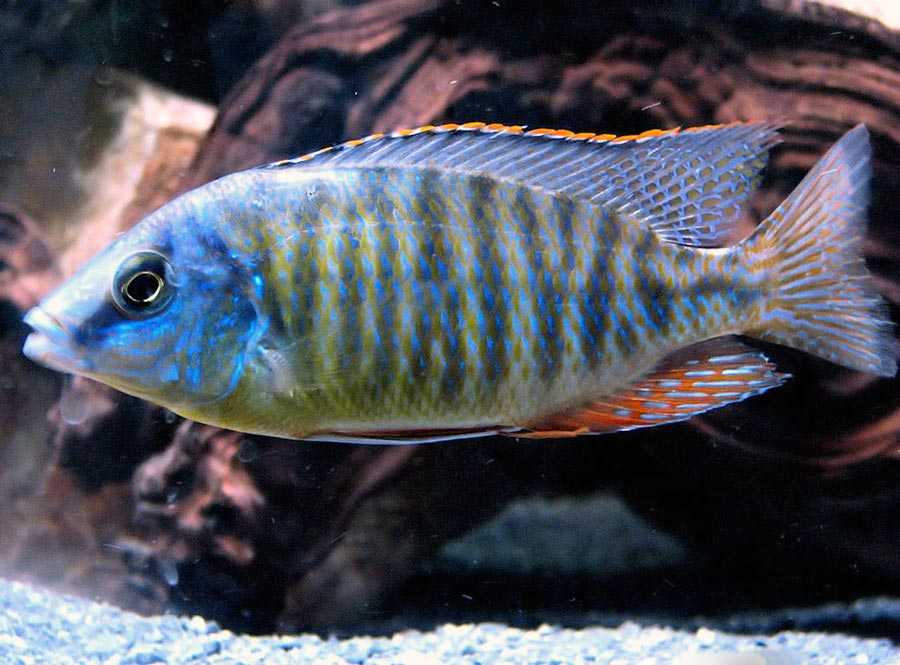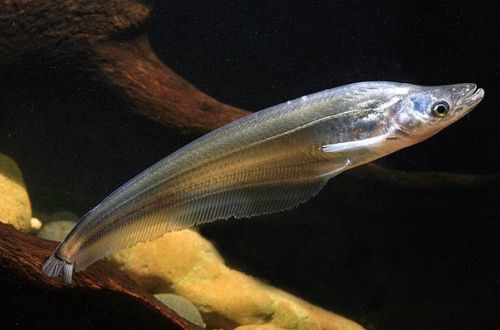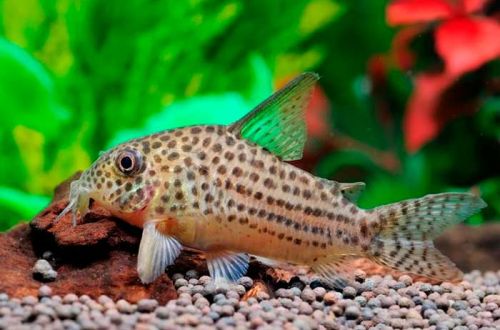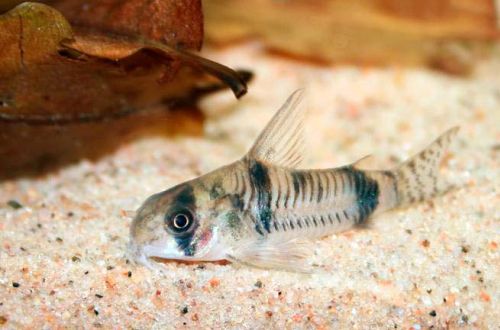
Fenestratus
Fenestratus, scientific name Protomelas fenestratus, belongs to the Cichlidae family. Endemic to Lake Malawi, located on the African continent.

Contents
Description
Adults reach a length of about 14 cm. The head of the fish has a blue tint, the body is colored yellowish-orange, and in males the color is noticeably brighter. The pectoral and anal fins are reddish with light speckles, the dorsal fin is blue with a red border.

Brief information:
- The volume of the aquarium – from 200 liters.
- Temperature – 24-28°C
- Value pH — 7.6–8.8
- Water hardness – medium to high hardness (10-25 dGH)
- Substrate type – sandy
- Lighting – subdued / moderate
- Brackish water – no
- Water movement is weak
- The size of the fish is about 15 cm.
- Meals – any
- Temperament – quarrelsome, aggressive during spawning
- Keeping in a harem with one male and several females
Food
They accept most types of dry, frozen and live food. The daily diet should combine meat and vegetable components, and with a predominance of the former. An excellent choice can be specialized food for Malawian cichlids, produced by many well-known manufacturers.
Maintenance and care, arrangement of the aquarium
A group of adult fish needs an aquarium of at least 200 liters. The design is quite simple, they usually use a sandy substrate and various structures made of large stones, rock fragments, from which caves and grottoes are laid out. You can get by with simple ceramic pots turned on their side, or various decorative items.
Water conditions are specific, with a high level of hardness (dGH value) and alkaline pH values. To maintain high water quality, it is recommended to make a partial water change weekly (15-20% of the volume) and regularly clean the soil from organic waste.
Behavior and Compatibility
Features of the hydrochemical composition of water, necessary for Fenestratus, significantly reduce the number of compatible species, and the not too friendly behavior of males during the spawning period makes their number even smaller. As neighbors, it is permissible to use Mbuna cichlids of a similar size, or peaceful large fish.
Males are belligerent towards each other, so in one aquarium you can only keep one male in the company of several females.
Breeding / breeding
With the beginning of the mating season, the male occupies a certain territory at the bottom of the aquarium and digs a small hole – this is the future spawning place. Then, he begins to aggressively invite females, sometimes very aggressively. That is why a harem content is necessary so that the attention of the male is scattered to several potential partners. When the female is ready, she accepts the courtship of the male, lays eggs and, after fertilization, immediately takes them into her mouth. For three weeks, she will keep the eggs, and then the fry, in her mouth, thereby protecting them from possible dangers. And only then will it be released into free swimming. All this time, the female will not be able to eat, so make sure that before spawning, the fish get enough food.
This behavior (holding the fry in the mouth) is characteristic of most cichlids of Lake Malawi, it has developed evolutionarily and is explained by the highest competition among fish.
Fish diseases
The main cause of most diseases is unsuitable living conditions and poor-quality food. If the first symptoms are detected, you should check the water parameters and the presence of high concentrations of hazardous substances (ammonia, nitrites, nitrates, etc.), if necessary, bring the indicators back to normal and only then proceed with treatment. Read more about symptoms and treatments in the Aquarium Fish Diseases section.





